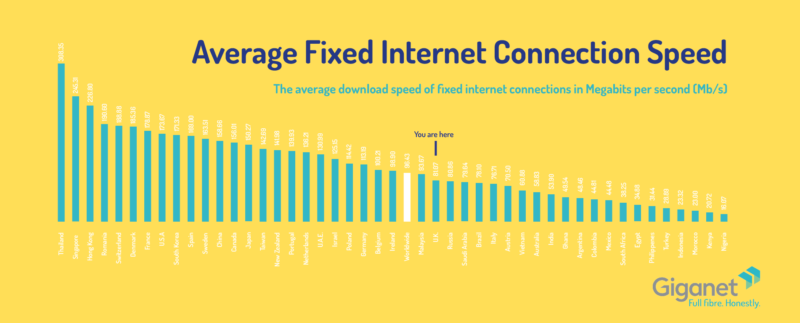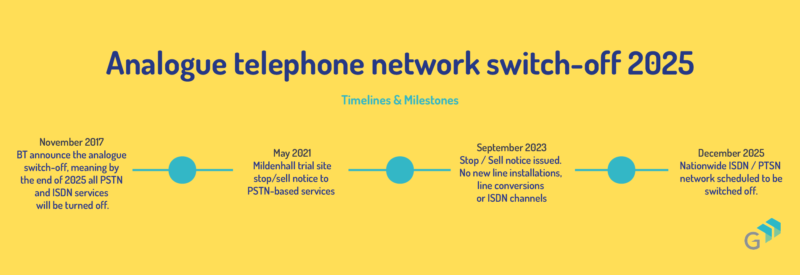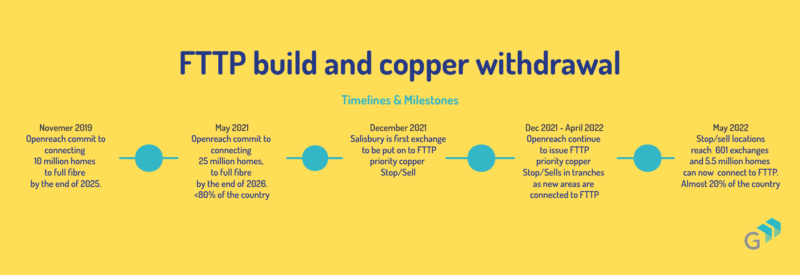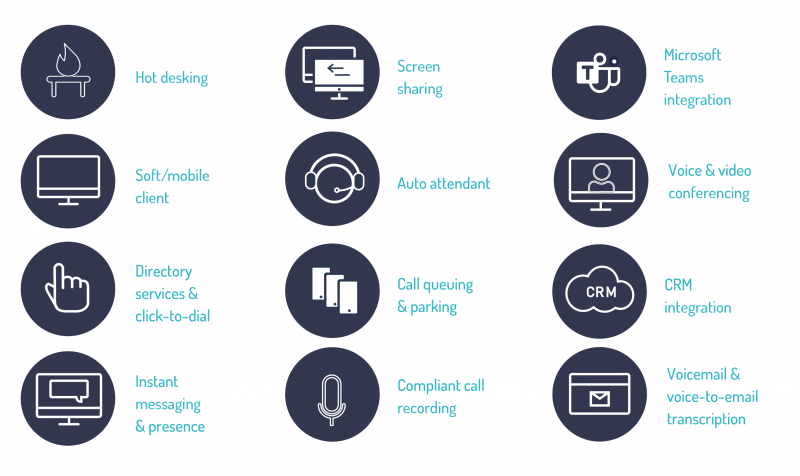Worrying about what the ISDN switch-off means for your business? Well, don’t. It’s a good thing, and our handy guide will tell you what you need to know. Keep up with this exciting technological upgrade, and your business will reap the rewards.
What is ISDN?
Firstly, ISDN (and its older sibling PSTN) is what we’ve used to make landline calls in the UK since the mid-’80s. Through a network of copper wires in the ground, we’ve historically transmitted information from A to B. To communicate with fixed locations, simply pick up the phone, dial a number, get connected.
Phone calls in future, however, will be made over the internet. You might’ve heard this referred to as VoIP or (Voice over Internet Protocol). This utilises newer technology such as glass or plastic fibre optic connections.
Why switch the ISDN off?
When we started to use the copper ISDN network for more than calls, newer lossless technology was developed to cope. Broadband internet and mobile phones gave us a taste for digital communications providing higher-quality, jitter-free calling and faster access to data.
It’s worth remembering that all data signals degrade over a range. Copper, on average loses nearly 90% of its signal over distances greater than 100 metres. The newer full fibre technology set to replace it by 2025, suffers only around 3% loss of signal.
Who says I need to switch?
Back in 2017, BT announced plans to turn off the ISDN & PSTN service by 2025, and the network (managed by Openreach) would gradually be switched on to FTTP or Fibre to the Premises connections. These changes usher in a supercharged communications upgrade for the UK.
Across the world, communication and data speed standards have been set far higher than the UK average. Without upgrading the physical network, there’s a danger of being left behind.

When will I be affected?
In 2020 Openreach began campaigns to stop selling copper-based PSTN and ISDN connections, effectively serving the UK its notice for the switch on a regional basis. As soon as full fibre comes to town, older connections are discontinued – meaning for some areas like Salisbury and Mildenhall, the switch-off has already begun.



What does it mean for my business?
For starters, It’s all good news. Call charges, line rental and infrastructure costs will be significantly reduced. Access to new calling features will transform the way you work with gains in efficiency and speed; Voicemail, Call Recording, Conferencing, Virtual Switchboards, Contact Status & Caller ID. Previously you would’ve paid a premium for these business essentials.
Benefits you’ll enjoy
The smartest productivity gains for larger organisations will be hyperfast broadband speeds and database or CRM integration for phones. Once you’ve linked your Client Relationship Management software to a VoIP system, all your contact methods with a customer can be logged, even from a remote workspace. Linking these systems supports better engagement and call metrics from your Sales or Service teams. Also, the speeds are perfect for cloud-based software that offers easy recovery of all your data in the event of a disaster.
If phone and internet are essential to your business. Or, if you’re still using an ISDN connection. Now is the perfect time to upgrade. Take the time to review your connectivity needs, find an honest provider and avoid the surge of late adopters. A service like Trustpilot will help you find a good one.
If you haven’t already sought advice, Giganet can help by outlining the options available for your location and requirements talk to a Giganet expert.
What options do I have?
To break free from ISDN today, your phone calls will need to travel over something else. Whatever your choice of telephony system, secure, end-to-end business voice and communication solutions will be offered synonymously.
A hosted system where your calls are managed and instantly relayed through intuitive call management software – like Giganet Connect can get you set up instantly. Alternatively, Splicecom will deliver the same VoIP benefits and integration to business applications like Microsoft Teams through three build options;
Cloud
- No on-site hardware – saving power, and space and eliminating maintenance
- Flexibility to scale users and features with ease
On-premises
- On-site resilience and survivability – in the event of connectivity issues
- Hardware for compliance / highly sensitive/secure scenarios
Hybrid
- Hybrid provides the best of both worlds.
If you wanted to maintain an on-premise system, you could also use SIP trunks.
A SIP Trunk (Session Initiation Protocol) is a streaming and media service that permits businesses with a PBX (Private Branch Exchange) to use VoIP using the same connection as the internet. This means that the Internet replaces the traditional ISDN-connected telephone trunk, allowing businesses to communicate with fixed and mobile telephone subscribers worldwide.
Is it difficult to switch?
No, thank goodness, switching is relatively easy. Assuming your business has a network infrastructure to support the system; e.g. having ethernet points to serve your existing internet needs. It’s simply a case of plugging in new VoIP phones. Even without an existing network, the connection process is pain-free and shouldn’t lead to any communications downtime. Business as usual.
Ready to make the switch?
While the UK Government continues to invest in the national rollout of a hyperfast ‘full fibre’ network, the gap between old and new technology grows by the day.
Don’t let your business fall behind waiting for the 2025 ISDN switch-off to happen, check your postcode for packages or talk to a Giganet expert and start enjoying the efficiencies, cost savings and benefits of full fibre now.


